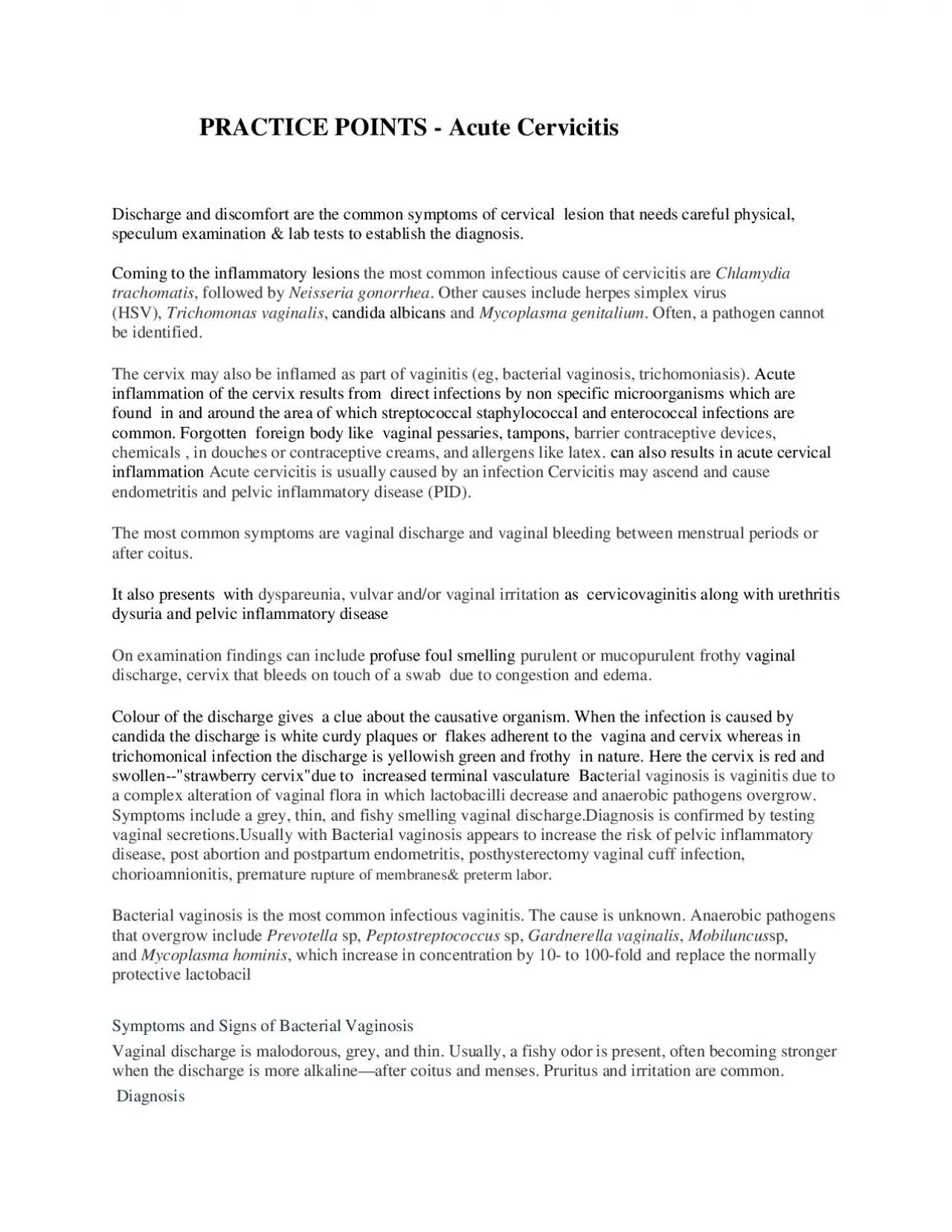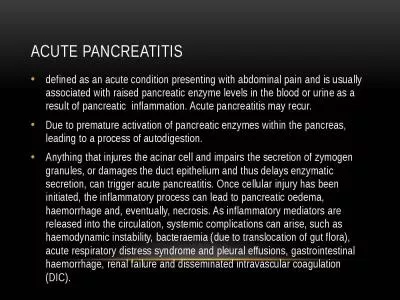PDF-PRACTICE POINTS Acute Cervicitis
Author : anastasia | Published Date : 2022-08-22
Discharge and discomfort are the common symptoms of cervicallesion that needs careful physical speculum examination lab tests to establish the diagnosis Coming
Presentation Embed Code
Download Presentation
Download Presentation The PPT/PDF document "PRACTICE POINTS Acute Cervicitis" is the property of its rightful owner. Permission is granted to download and print the materials on this website for personal, non-commercial use only, and to display it on your personal computer provided you do not modify the materials and that you retain all copyright notices contained in the materials. By downloading content from our website, you accept the terms of this agreement.
PRACTICE POINTS Acute Cervicitis: Transcript
Download Rules Of Document
"PRACTICE POINTS Acute Cervicitis"The content belongs to its owner. You may download and print it for personal use, without modification, and keep all copyright notices. By downloading, you agree to these terms.
Related Documents














